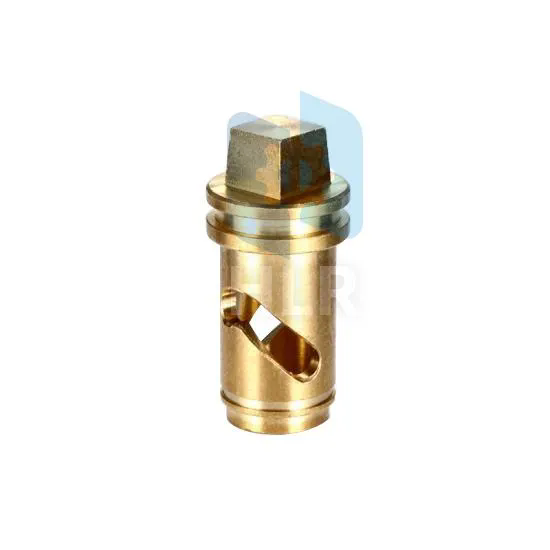The Precision and Efficiency of CNC Turning for Fastener Parts
2024-08-10
In the world of manufacturing, precision and reliability are crucial, especially when it comes to components like fasteners that play an integral role in assembling and securing various parts. CNC turning has become a game-changer in producing high-quality fastener parts with exceptional accuracy and efficiency. This blog delves into the benefits of CNC turning for fastener parts, explores the process, and highlights why it's a preferred choice for manufacturers across different industries.
What is CNC Turning?
CNC turning refers to a manufacturing process where a Computer Numerical Control (CNC) machine uses rotary cutting tools to shape and machine a workpiece. In turning operations, the workpiece is rotated against a stationary cutting tool, which removes material to create the desired shape. CNC turning is known for its precision, repeatability, and ability to produce complex geometries, making it an ideal choice for fabricating fastener parts.
Benefits of CNC Turning for Fastener Parts
1. High Precision and Consistency
- Accuracy: CNC turning machines are programmed with exact specifications, ensuring that each fastener part is produced with high precision. This is critical for components that need to fit perfectly and function reliably.
- Consistency: Once set up, CNC machines can reproduce the same part multiple times with identical specifications, reducing variability and ensuring consistency across large production runs.
2. Complex Geometries and Customization
- Versatility: CNC turning can create a wide range of complex geometries, including threads, knurls, and intricate profiles that are often required in fastener designs. This versatility allows for greater customization and adaptation to specific needs.
- Design Flexibility: Manufacturers can easily modify designs and make adjustments to the machining process without significant changes to the setup, making it easier to produce custom or modified fastener parts.
3. Efficient Production
- Reduced Lead Times: The automation and precision of CNC turning enable faster production cycles compared to traditional machining methods. This results in shorter lead times and quicker turnaround for fastener parts.
- High Productivity: CNC machines can operate continuously with minimal supervision, increasing overall productivity and allowing for higher output rates.
4. Cost-Effective Manufacturing
- Minimized Waste: CNC turning is a subtractive process where material is precisely removed, reducing the amount of waste compared to processes that generate excess material.
- Lower Labor Costs: The automation provided by CNC machines reduces the need for manual intervention, lowering labor costs and minimizing human error.
5. Superior Surface Finish
- High-Quality Finish: CNC turning produces fastener parts with a superior surface finish and tight tolerances. This is essential for components that must meet stringent quality standards and perform reliably under stress.
The CNC Turning Process for Fastener Parts
1. Design and Programming
- CAD/CAM Software: The process begins with the design of the fastener part using Computer-Aided Design (CAD) software. The design is then converted into machine code using Computer-Aided Manufacturing (CAM) software, which guides the CNC machine during the turning process.
2. Machine Setup
- Tool Selection: The CNC machine is equipped with the necessary cutting tools for the specific fastener design. Tool holders, inserts, and cutting parameters are selected based on the material and desired finish.
- Workpiece Fixturing: The workpiece is securely mounted on the CNC lathe or turning center. Proper fixturing ensures stability and accuracy during machining.
3. Turning Operation
- Material Removal: The CNC machine rotates the workpiece while the cutting tools remove material according to the programmed specifications. This includes turning, facing, threading, and other operations required to achieve the final shape.
- Quality Control: Throughout the turning process, the dimensions and quality of the fastener part are monitored using precision measuring instruments to ensure that they meet the required standards.
4. Post-Processing
- Deburring and Finishing: After turning, the fastener parts may undergo additional processes such as deburring, polishing, or coating to enhance the finish and ensure proper functionality.
- Inspection: Final inspection involves checking the parts for dimensional accuracy, surface quality, and compliance with specifications before they are ready for use or shipment.
Applications of CNC-Turned Fastener Parts
1. Automotive Industry
- Engine Components: Fasteners used in engines and other critical components must meet high standards of precision and durability. CNC turning provides the accuracy needed for these demanding applications.
- Structural Parts: Fasteners for vehicle assemblies, such as bolts and nuts, benefit from the consistent quality and performance offered by CNC turning.
2. Aerospace Industry
- High-Performance Fasteners: The aerospace industry requires fasteners that can withstand extreme conditions. CNC turning ensures the precise tolerances and high-quality finish necessary for aerospace applications.
- Custom Components: CNC turning allows for the production of custom fastener parts tailored to specific requirements and standards.
3. Industrial Machinery
- Assembly and Maintenance: CNC-turned fasteners are used in various industrial machines and equipment, where reliability and durability are essential for operational efficiency and safety.
- Specialty Parts: Custom fasteners and specialty parts produced through CNC turning are used in specialized machinery and equipment.
4. Medical Devices
- Precision Fasteners: In the medical field, fasteners used in devices and implants require high precision and a clean finish. CNC turning meets these demands with exceptional accuracy and quality.
Conclusion
CNC turning has revolutionized the production of fastener parts by offering unparalleled precision, efficiency, and customization. Its ability to produce complex geometries, maintain consistent quality, and reduce operational costs makes it a preferred choice for manufacturers across various industries.
Whether you're in automotive, aerospace, industrial machinery, or medical device manufacturing, CNC turning provides the precision and reliability needed for high-quality fastener parts. By leveraging this advanced technology, manufacturers can enhance their production processes, meet stringent quality standards, and deliver superior products to their customers.



